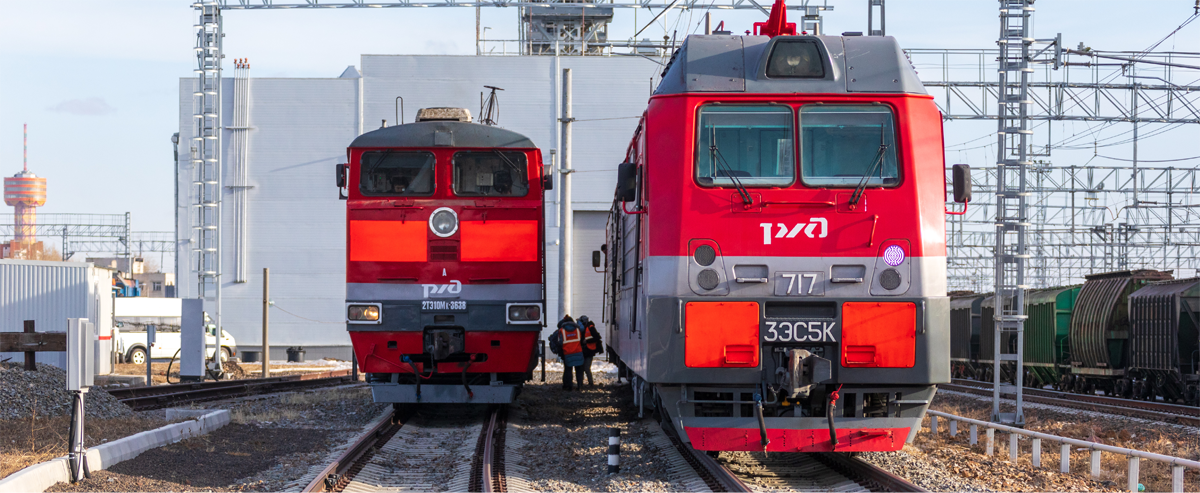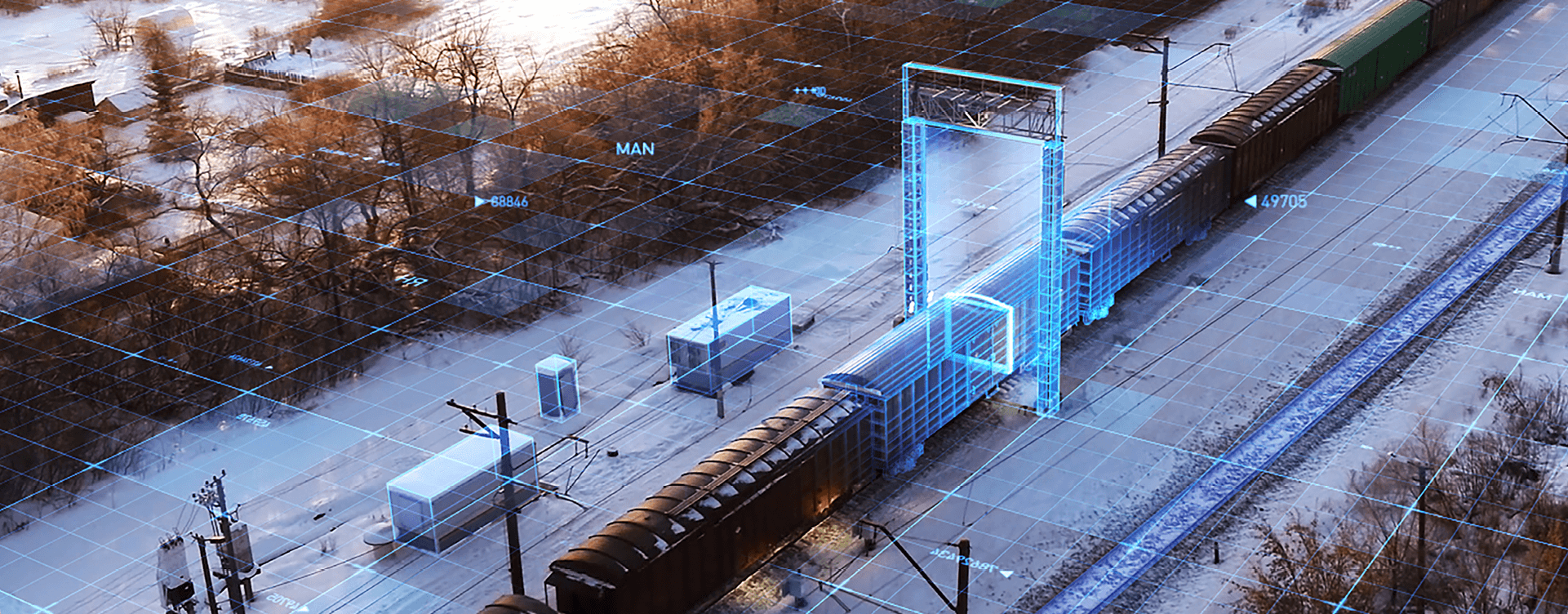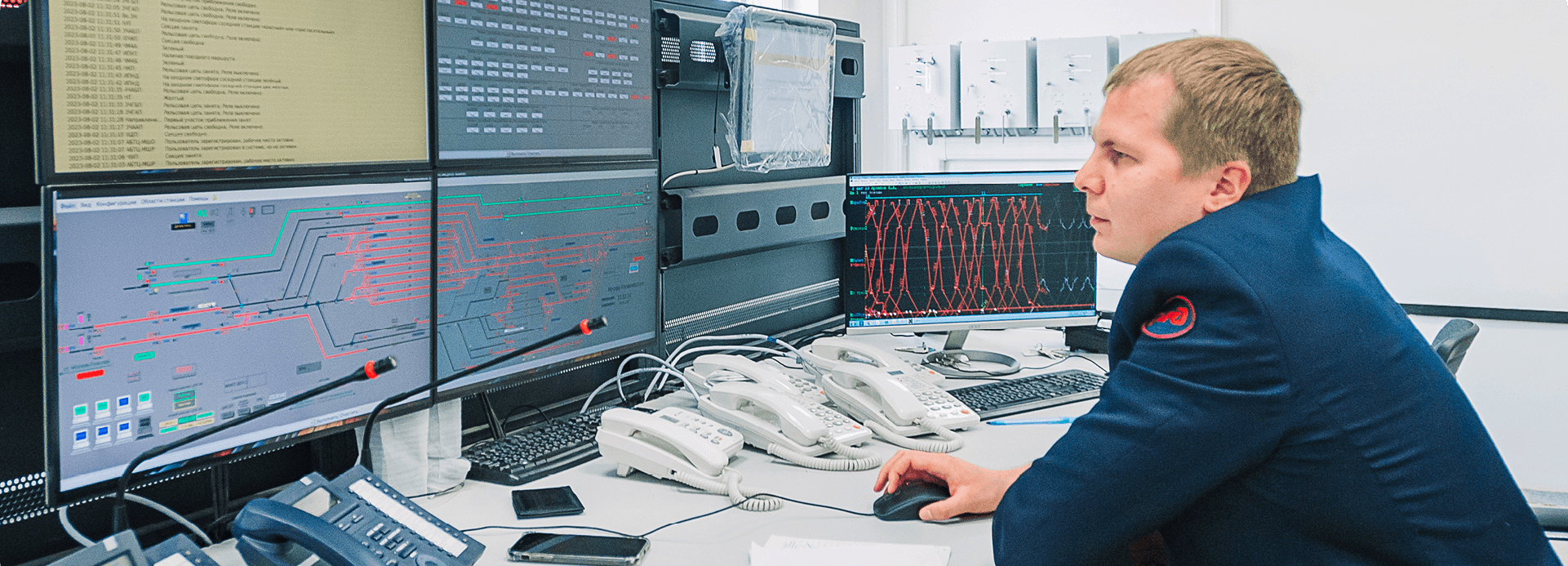Innovation‑driven development and digital transformation
The Russian Railways Group’s R&D activities and innovation‑driven development follow the priorities set forth in its Research and Development Strategy until 2025 and further until 2030 (the “White Book”)Approved by Russian Railways’ Order No. 769/r dated 17 April 2018., in line with the country’s strategic development goals and global R&D trends.
Innovations
The Group’s Comprehensive Innovative Development Programme until 2025 (the “CIDP”)Approved by the Board of Directors of Russian Railways on 26 February 2020. lays the groundwork for fulfilling its strategic priorities. It outlines 11 groups of key projects, proposes organisational improvements to innovation management, and establishes partnership mechanisms based open innovation.
In 2023, the Russian Railways Innovation Leader competition was launched to encourage innovation within the Company. Three branches, whose employees were declared winners, received funding of RUB 3 m each as part of the Russian Railways Innovation Support Programme to bring their winning project to life in 2024.
Key innovation‑driven development projects in 2023
The following innovation projects were implemented as part of the CIDP in 2023:
- deployment of innovative rolling stock for passenger transport (state‑of‑the‑art coupled two‑car sets);
- development of the EMKA2 catenary and battery‑powered electric shunter as well as alternative fuel locomotives;
- improvement of the passenger train service on the Moscow Central Diameters contributing to the development of the Central Transport Hub;
- introduction of a single ticket service for direct and multimodal transportation and integration of Russian Railways’ information systems with state‑run ticket sales systems;
- implementation of intelligent and automated customer service systems for freight transportation, including Autoagent, Electronic Claim Settlement, RZD Market, and CD Freight Forwarder;
- introduction of virtual coupling – a wireless inter carriage link technology, single‑person freight train driving technology, remote locomotive driving, high‑performance specialised rolling stock for infrastructure repair and maintenance, innovative loading and unloading equipment, innovative freight terminal technologies, new container train departure routes from Russian Railways’ freight terminals, and acoustic monitoring points;
- research and development of prototype next‑generation derailment control devices;
- introduction of innovative solutions to reduce environmental impact and save fuel and energy resources, including digital energy‑saving heating systems, ceramic heating panels, guaranteed engine start systems, and compact dual‑mode LED lights.
R&D breakthroughs in 2023
- Efforts continued to develop and test computer vision systems to enable the deployment of highly automated UA4 electric trains on the Moscow Central Circle.
- As part of Russian Railways’ R&D plan, calculations and simulations were completed for a modified 2TE116U mainline diesel locomotive converted to natural gas and diesel traction, with an operational model and design documentation developed.
- The development of a new generation of eight‑axle freight cars, consisting of two rigidly coupled body sections, was launched.
- Efforts were made to increase the speed of multimodal transit and domestic freight transportation by organising freight transportation at speeds up to 140 km/h.
- Railway track design and maintenance technologies were being developed to achieve a gross throughput of 2.5 billion tonnes.
For more details on the Company’s innovations see Russian Railways’ 2023 Annual Report, Innovation‑driven Development and Digital Transformation section.

Digital Transformation
Russian Railways is actively embracing digital transformation, which leads to more efficient use of employee time, reduced material costs, and faster, higher‑quality management decisions.
Digitalising process flows
- Artificial intelligence (AI), distributed ledger, Internet of Things, and digital twin technologies enhance data accuracy and reliability, enabling high‑quality predictive analytics, repairs based on actual condition, and a trusted environment for customer and partner interactions. The focus on developing big data processing technologies and quantum communications further strengthens data security during transmission.
- Effective data management, transmission, and protection are essential for driving the growth of the country’s data economy. Russian Railways developed and implemented a Corporate Data Management System (CDMS) that goes beyond simple data collection. It supports statistical, accounting, and managerial reporting, while also enabling advanced and predictive analytics, ultimately leading to more effective management decisions.
- New technologies are making work safer and less routine. VR/AR training reduces workplace injury risks in hazardous areas, while software robots and AI technologies streamline tasks.

Software import substitution
The Company’s 2023 target for transitioning to the preferred use of domestic software has been achieved:
- as at the year end, 173 automated systems owned by Russian Railways were registered in the Unified Register of Russian Software and Databases;
- the share of expenditures on purchasing Russian software and related services reached 81.76% of total software procurement costs, exceeding the target of 78.0%;
- 741 employees of Russian Railways’ Main Computing Centre were trained on the use of import‑substituted software.
Domestic software transition progress as at 1 January 2024:
- over 144,000 users of electronic document management systems (23,900 users transitioned in 2023);
- 133,700 users of ERP systems (of them, 54,600 users were transitioned in 2023);
- over 31,000 users of business analytics and master data management systems (of them, over 8,700 users were transitioned in 2023);
- over 29,200 users of EAM systems and over 6,700 units of track maintenance equipment (of them, 8,100 users and 1,800 units of track maintenance equipment were transitioned in 2023 respectively).
- transitioning automated passenger service systems to import‑independent platforms, including the Express 3 automated control system, the passenger portal for direct sales of rail and air tickets, and the passenger service performance database;
- implementing Russian Railways’ Corporate Data Warehouse on a domestic platform, which involves developing a standard functionality for a Unified Corporate Data Analysis and Visualisation System as a tool for analysing the Company’s data and ensuring a unified development environment for analytical information systems using a centralised architecture;
- developing a primary dispatching tool, built on an import‑independent platform, to effectively manage traffic and track the actual execution of the train schedule, with the Central Directorate for Traffic Management’s Transportation Management Centre information and control system already implemented;
- re‑engineering the automated freight car database and locomotive depot‑level systems;
- developing an automated system for monitoring the performance of Russian Railways’ operational branches and structural units based on a new generation of key performance indicators.
For more details on the Company’s digital transformation projects see Russian Railways’ 2023 Annual Report, Innovation‑driven Development and Digital Transformation section
Quantum communications
In 2023, new segments were added to the quantum network, bringing its total length to 3,295 km.
A total of 25 research and development projects are underway, focused on creating domestic equipment and components, as well as developing advanced technologies.
Continuous efforts are being made to develop the ecosystem, which includes refining regulatory frameworks, standardisation, building human capital, and promoting awareness. The ecosystem registry currently includes over 140 organisations.
In 2023, the Framework for Regulating the Quantum Communications Industry in Russia until 2030 was approved. Additionally, six preliminary national standards, standardisation guidelines, and amendments to the quantum communications‑related codes in the All‑Russia Classifier of Economic Activities (OKVED) and All‑Russia Classifier of Products by Types of Economic Activities (OKPD) were approved by the Russian Federal Agency for Technical Regulation and Metrology.
Information security risks
Managing information security risks is an essential priority. Breach of data confidentiality, integrity, availability, reliability, etc., may, among other things, lead to:
- disruptions of corporate systems thereby impacting operations and critical IT infrastructure facilities;
- disclosure of information constituting a trade secret or other types of secret;
- damages to the integrity of financial documents;
- unauthorised access to the personal data of employees and customers;
- direct and indirect financial losses.
The main risk factors related to the security of Russian Railways’ information infrastructure include tampering by third parties to gain unauthorised access to the information of the Company and its counterparties, including purposeful hacker and virus attacks, as well as internal threats of employee misconduct and analysis and SIEM tools failure.
The key information security measures implemented by Russian Railways include:
- classification and categorisation of Russian Railways’ systems, information security threat modelling, development of information protection requirements;
- sound arrangement of the information infrastructure components with due account for information security;
- design and implementation of centralised protection tools and private information protection subsystems in the Company’s information infrastructure, certification of Russian Railways’ systems for compliance with information security requirements;
- arrangements to analyse and control the security of IT infrastructure;
- organisation of employee training in information protection;
- ensuring the security of Russian Railways’ information systems in use, monitoring information security incidents and responding to them;
- conducting internal investigations into information security and confidentiality incidents related to the use of computers;
- enhancement of the Company’s information security policies and guidelines.
